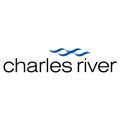Rodent Health Surveillance: Innovation driving changes
Modern biomedical research greatly benefits from sophisticated techniques which can detect even the most subtle alterations between different individuals or groups. This has raised the bar for the health status of research rodents; even silent infections can cause short-term shifts in the body's host-defense systems or various other metabolic functions. However, several problems complicate QC efforts to insure the animals meet the necessary specifications. First, because many rodents, including almost all mice, are housed in some type of individual containment caging (IVC, FTC, etc.), any infection is likely to be present in so few cages that random sampling is not effective as a detection strategy. Second, although a very small amount of soiled bedding can be collected from each cage and given to a "sentinel", this method does not reliably transfer many of the common infections. Third, shipping rodents to a diagnostic laboratory is expensive and subject to weather embargoes. Finally, economic trends have required more to be accomplished with less expense and labor. Fortunately, techniques have emerged in the last several years which allow rack-level monitoring at a sensitivity level higher than achievable by soiled bedding sentinels. All diseases which are transmitted by soiled bedding, as well as many others, can be detected by PCR testing of dust which accumulates in filters, exhaust plenums, change hoods, etc. With careful selection of test panels and judicious use of pooling, PCR-based testing can reduce costs, reduce labor, and even replace sentinels. When animals do need to be tested for antibodies, dried blood spot methods have been adapted to rodent serology, allowing full serology panels to be conducted on essentially one drop (20 ul) of blood shipped at ambient temperature. Thus, innovative technology has expanded the QC toolbox available to vivarium managers, enhancing surveillance while controlling labor and other costs.






